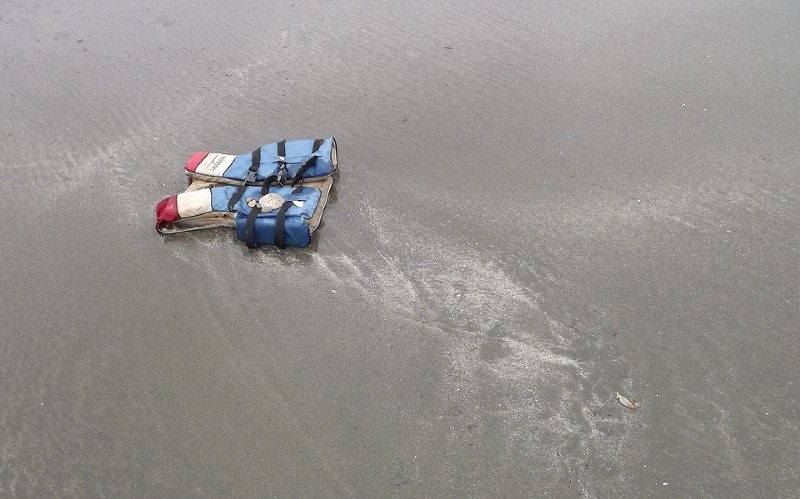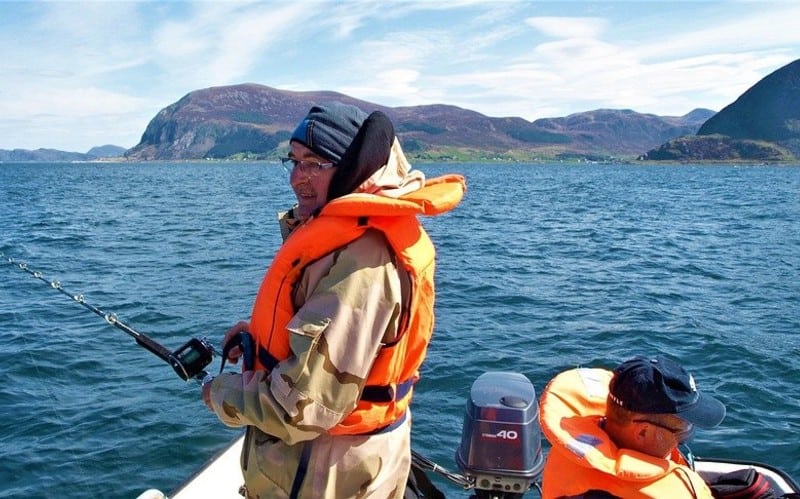What Does Buoyancy Mean for Boaters?
When you’re looking for life jackets and other PFDs you may run across pounds buoyancy. Floatation devices all have a buoyancy rating. Understanding what that means will allow you to choose the right PFD for you. Everyone on a boat should have access to a personal flotation device. One that fits and they know how to use.
Let’s take a look at how buoyancy works. How a life jacket with a seemingly low buoyancy rating can keep a person afloat. And how you should choose the right personal flotation device.
How Does Pounds Buoyancy Work?
The best way to understand what pounds buoyancy means is to use an example. Let’s say you bought a new Type III life jacket. The label says it has 17lbs buoyancy. You weigh 200 pounds. How is it able to keep you afloat in the water if it is only able to float 17lbs?
That 17 lbs of buoyancy that the PFD has means it can float 17lbs of dense matter. Think bricks. If you put 17lbs of bricks on the life jacket, it wouldn’t sink.
You, as a human, are not 200 pounds of dense material. People float. In general, a human is 80% water already. That water is going to have no weight if you fall overboard so it can be ignored. That means a little math can solve the problem.
200 pounds x 80% = 160 pounds.
160 pounds of you doesn’t count anymore. Instead, 40 pounds needs to be floated. Still too much for your 17 pounds of buoyancy, right?
The rest of you is still not solid. About 15% of a human is fat. Fat is actually lighter than water. So we need to calculate for that.
200 pounds x 15% = 30 pounds.
30 pounds of you is going to float all on its own. You only have 10 pounds of dense material that needs to be kept afloat. Your life jacket is rated for 17 pounds and is now more than capable of keeping you afloat.
In our example, a person would need to weigh 350 pounds. After that weight, a PFD with 17 pounds of buoyancy would no longer be safe to use. At that weight you would need one with 18 pounds of buoyancy.
What are the Types of PFDs Available?
There are five types of PFD that each offer different buoyancies. They are used for different purposes as well. You’ll need to pick the right one for your body size. Also for the activity you plan to do on the water.
Type I: These have the highest buoyancy. They are also called Off Shore Life Jackets. These are recommended for anyone on open water. Workers at sea use these on rough seas in case they go overboard. They are designed to support any size person. They can also flip an unconscious person right-side up.
Type II: This is a near-shore buoyancy vest. These are intended for calm inland waters. Some place where, in an emergency, rescue will be quick.
Type III: This is considered a flotation aid. They are meant for calmer waters. Most boaters choose these as they are considered most comfortable. Also they tend to be more fashionable. You need to consciously keep yourself upright in this type of life jacket.
Type IV: Throwable device. This is the kind of floatation aid sometimes called a donut or ring. It is not wearable. They’re designed to aid in quick rescue.
Type V: These are special use devices. They may qualify as Type I, II or III depending on circumstances.
What Affects Buoyancy?
Understanding buoyancy means understanding science. Buoyant force is the force liquid exerts on waters submerged in them. This force is a product of differences in pressure. The pressure at the bottom of a submerged object is different than at the top. So there will always be more pressure at the bottom than the top of an object. The upward force wants you to go up. But the upward force is affected by weight.
Weight does affect buoyancy. If weight is greater than buoyancy, an object sinks. If weight is less, the object floats. This is why a flotation device works. It alters buoyancy and counteracts your weight. Thus, with the right flotation device, you float. The upward force keeps you afloat easily now.
The density of the fluid is also relevant. Obviously for life jackets we are dealing with water. Other fluids have a greater density and will work differently. Think of something like molasses. That’s very dense and can hold up a greater weight.
Salt water does affect buoyancy. Salt water has a greater density than freshwater. The more salt, the greater the density. That is why highly salty water, like the Dead Sea, allows easy floating. The upward force is greater and keeps you up more easily. That force and density is the reason they say anyone can float in the Dead Sea.
The Bottom Line
Remember that the type of PFD greatly affects buoyancy. Not every life jacket is designed the same way. Not everyone will keep your body afloat the same way. Some are only designed for conscious users. If your body hits the water you will not flip over. So make sure you’re picking the correct life jacket for the activity you plan to do.
Most jackets will label their weight requirements. That way you’ll know if it’s able to keep you buoyant in the water. Never risk choosing a life jacket not designed to handle your weight. It could end up making the situation worse instead of saving your life.
Categories: Boats, nauticalknowhow














4 Comments
Tom M on July 12, 2020
Thank you for an easy to understand, well written, helpful explanation. Much appreciated.
Nachmen weiss on July 14, 2020
Tnx a million finally understood
danny on March 23, 2021
is a 40lb bncy rating better than a 28 lb pfd rating?
Denise Mays on August 7, 2021
Do the percentages also apply to children (not infants), or is there another formula for a child.